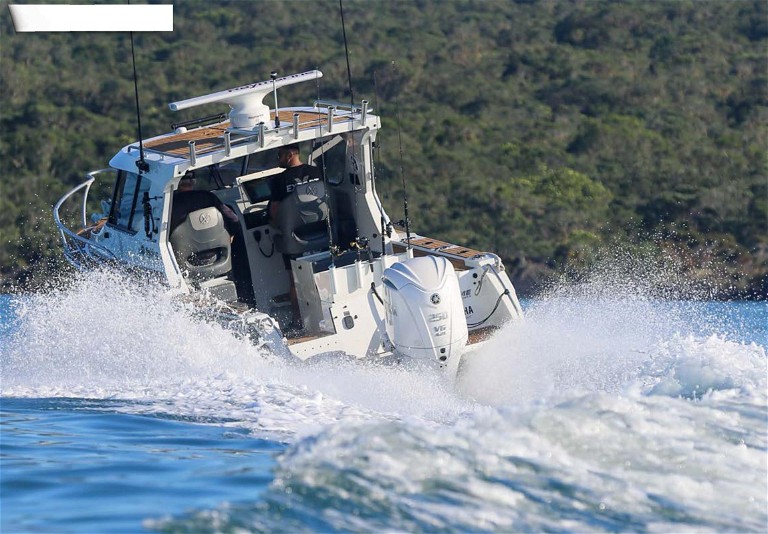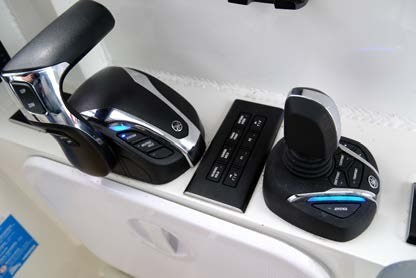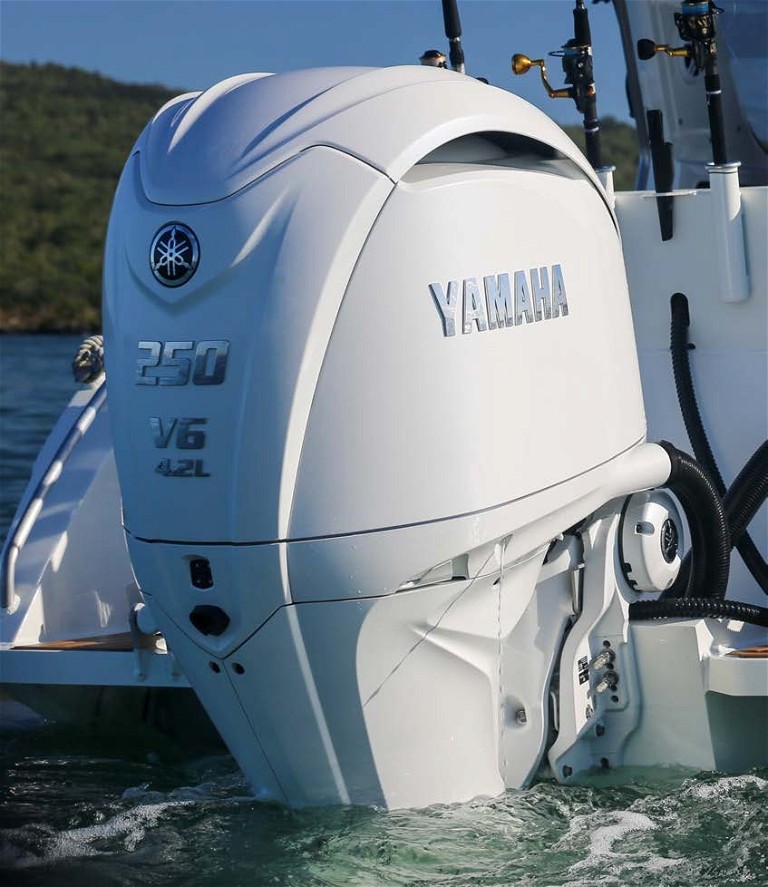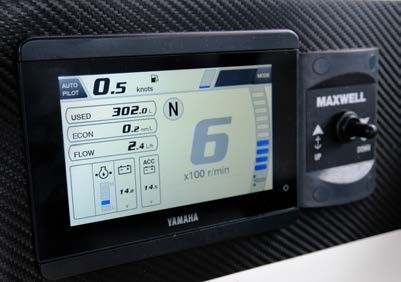PROJECT BOAT THE ENGINE
Words & Images By Nick Jones

When it came to powering our NZ Fishing News Project Boat, an Extreme 745 Game King, we were spoilt for choice. The 250hp outboard engine class is a popular size and therefore it’s no surprise that the major engine makers have some great fourstroke offerings in this category.
However, we were drawn to the Yamaha F250 DES, particularly its digital electric steering which opened up a host of new features including single-engine compatibility with Yamaha’s Helm Master EX joystick and autopilot control system.
Features
The Yamaha F250 DES is based on a 4.2lt twin-cam V6 engine shared with the 225hp and 300hp versions. The 4.2lt powerhead was designed specifically for marine use and is the first Yamaha marine engine to have a plasma fusion coating on the cylinder bore walls instead of the traditional steel liner – a feature commonly found on high-performance sports cars.
As with the Yamaha V8 350, the V6 range has full digital electronic control with ‘fly by wire’ control of throttle and shifting. RPM can be adjusted up or down precisely with the push of a button or via the throttle, and a shift dampener system (SDS) allows the prop hub to slip slightly when forward or reverse gear is chosen, resulting in a very smooth transition when the dog clutch engages.
As previously noted, the single-engine compatibility with Yamaha’s Helm Master EX joystick and autopilot control system delivers a whole swag of features to enhance your fishing or cruising experience. The digital electric steering (DES) also removes the need for steering pumps, hoses, hydraulic lines, and clutter in the transom area.
The F250 DES has a 70amp alternator, which still produces 55amp at 1000rpm and has a 50amp net or dedicated battery charging capability.
Servicing intervals are typical – every 100 hours or annually after the first 20 hours – but the F250 DES uses a single-toothed serpentine belt that has a 1000- hour designed lifespan. As with all Yamaha double OHC or quad-cam engines, the camshafts need to be removed to adjust valve clearance. However, this is only required every 500 hours and doesn’t require removing the powerhead, as is the case with some chaindriven camshaft outboards.
Usability and performance
The Yamaha experience starts before you’ve even started her up. The V6 engines have the optional ‘YCOP’ engine immobiliser system that uses a remote – like a modern proximity car key. The TotalTilt function allows for the complete tilt up or down with a simple double push of the up or down trim/tilt buttons. And when you are ready to fire up, the F250 starts with a push-button that, once running, will not engage the starter motor if you accidentally push it.
Low-speed manoeuvrability is excellent for tasks like docking, and the reason is multi-factorial. Firstly, the electric steering is smooth and quick, and you have the option of joystick control. There is also thrust-enhancing reverse exhaust that redirects bubbles away from the prop when in reverse and under 2500RPM, resulting in cleaner water for better prop grip and thrust.
Finally, the variable trolling control allows you to adjust the idle RPM by increments of 50 for extremely precise rev control if desired.
With a punchy hole shot and grunty roar, the F250 DES gets our 7.5m vessel up on the plane without any fuss and it settles into a comfortable zone at around 4000RPM, giving us a cruising speed of around 28 knots while burning less than two litres per nautical mile. At WOT, the Project Boat boogies at almost 40 knots on the flat stuff. The variable camshaft timing delivers great throttle response and power throughout the rev range.
I really like the simplicity of Yamaha’s integrated autopilot system. With the push of a button and no fiddling around on an MFD screen, I can initiate a heading hold or course hold and then alter my route just as easily.

But the F250 DES’s work often isn’t done upon reaching our fishing destination as we regularly employ one of the following three single-engine Helm Master EX applications available:
• Fishpoint – works to maintain the boat’s position (e.g., over a pinnacle or next to a marker buoy) and can be moved in 1.5, 3 or 8-metre increments with a bump of the joystick forward, back, or to either side.
• Driftpoint – allows you to keep your bow pointed in a set direction while allowing you to naturally drift with the prevailing wind and/or current.


• Driftpoint track – allows you to maintain your bow heading while drifting along a set route of waypoints (e.g., over a fishy contour or area of coast/reef ) plotted on your compatible MFD.
The precise RPM and/or speed control afforded by the system is also extremely useful when trolling for gamefish or slow-